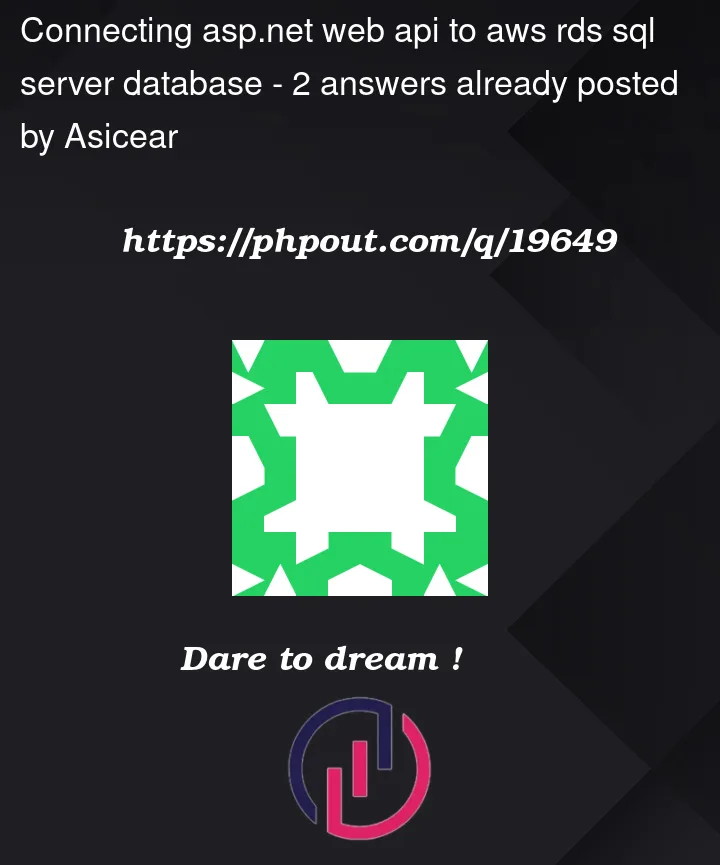I am trying to connect web api made in asp.net to sql server database provided by aws rds. I have never used aws before so I am not really sure if I am missing something there. I have tried to do it but i get following message when I added migration and trying to update database (using EF core):
A network-related or instance-specific error occurred while establishing a connection to SQL Server. The server was not found or was not accessible. Verify that the instance name is correct and that SQL Server is configured to allow remote connections. (provider: Named Pipes Provider, error: 40 – Could not open a connection to SQL Server)
I have following code in my API:
Context class:
public class TestContext : DbContext
{
public virtual DbSet<Fruit> Fruits { get; set; }
public TestContext(DbContextOptions<TestContext> options) : base(options) { }
protected override void OnConfiguring(DbContextOptionsBuilder optionsBuilder)
{
if (!optionsBuilder.IsConfigured)
{
optionsBuilder.UseSqlServer("server=<nameofserver>;user=<username>;password=<password>;database=<nameofdatabase>;"); // there i put data from my database hosted on aws
}
}
and in Program.cs:
builder.Services.AddDbContext<TestContext>(options =>
options.UseSqlServer("server=<nameofserver>;user=<username>;password=<password>;database=<nameofdatabase>;"))// there i put data from my database hosted on aws1;
I know I should put connection string in appsettings.json but I believe that is not the case now. Why isn’t the table being created in the database? Should i enable/do sth on aws website? Or maybe the problem is in the code? How can I solve it?




2
Answers
At the current time, you will find a similiar use case for AWS SDK for .NET.
This current example shows you how to use the AWS SDK for .NET (v3) to create a REST service that lets you do the following:
https://docs.aws.amazon.com/code-library/latest/ug/aurora_example_cross_RDSDataTracker_section.html
I believe this example will be ported to SQL Server at some point.
To connect to SQL Server, you need to supply your own connection details (unlike the Amazon Aurora Serverless database that needs other creds as discussed in the example.). Also note that SQL Server Does Not have a Service Client like Amazon Aurora Serverless does.
Also – make sure you set your inbound rules correctly.
https://docs.aws.amazon.com/AmazonRDS/latest/UserGuide/Overview.RDSSecurityGroups.html
Once you set your inbound rules, set the user password, etc, the following C# should work.
It may or may not have anything to do with your connection string, but the very first thing you need to make sure of is that the server where your api/website is running has permissions to talk to your rds instance – by default it does not; you will need a security group that specifically allows it before you do anything else (and don’t accidentally make it public – you rds instance will get hammered by hackers trying t guess the password).
Easiest way to check is fire up SSMS or another such tool, and see if you can connect to RDS from the machine that runs the code – if you can’t – nothing you do in your code will solve that.
Once you can connect from SSMS to RDS successfully, then you can play around with your connection string if it still is having problems.